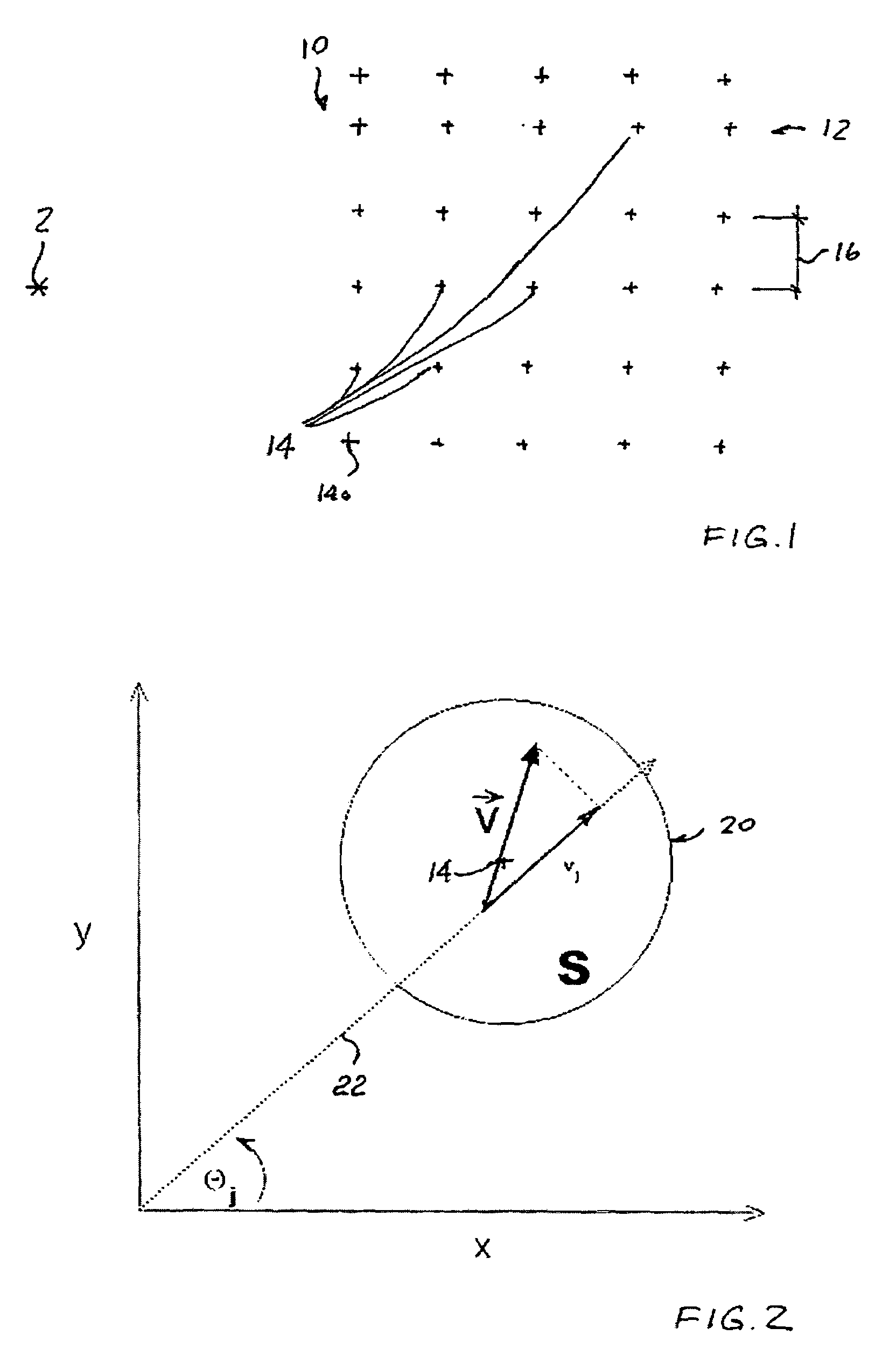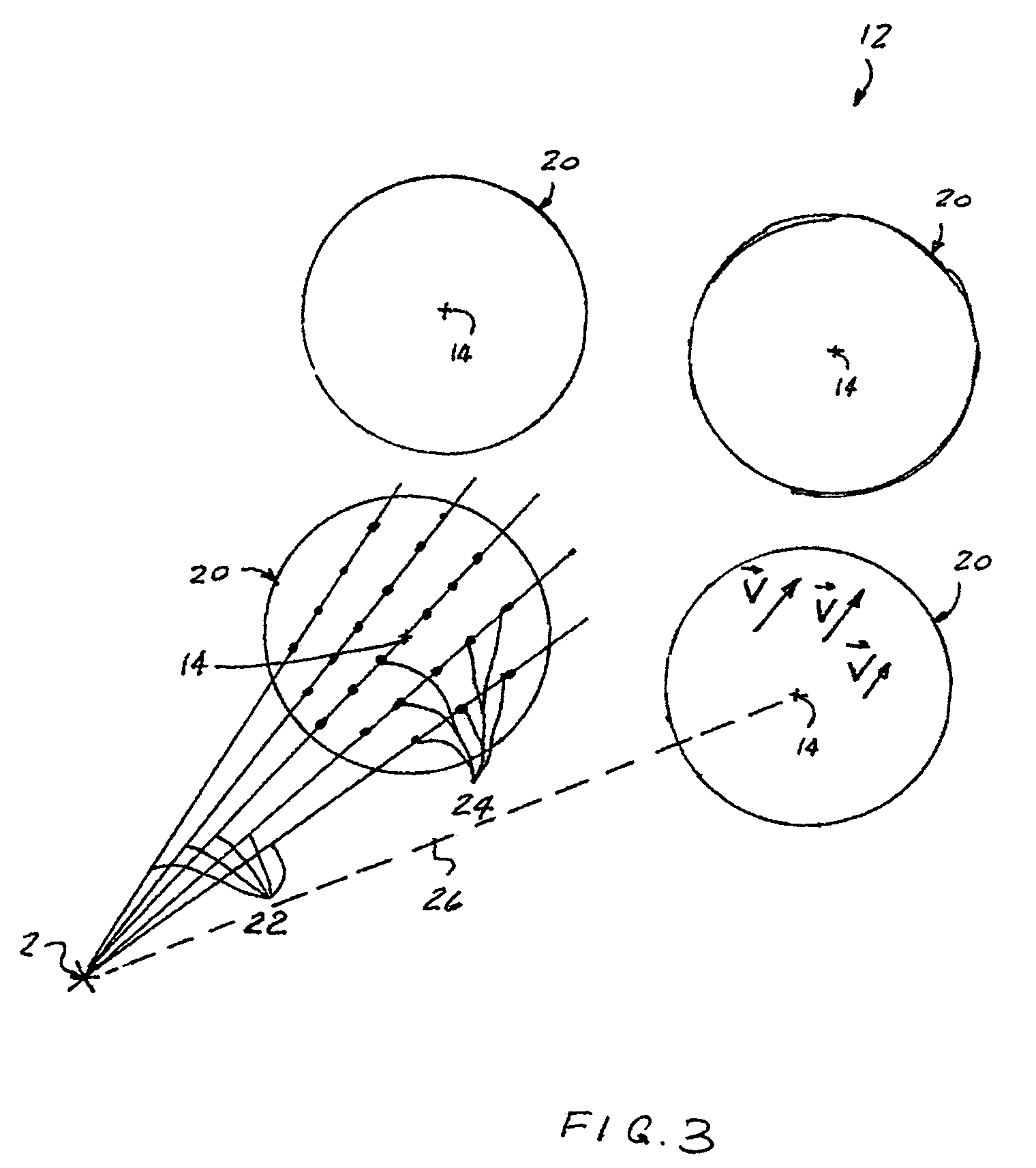Method for measuring surface currents using a long-range single station high frequency ground wave radar system
a high-frequency ground wave and radar system technology, applied in the field of surface currents, can solve the problem that the barrick method is only useful
- Summary
- Abstract
- Description
- Claims
- Application Information
AI Technical Summary
Benefits of technology
Problems solved by technology
Method used
Image
Examples
Embodiment Construction
[0026]Prior to proceeding to the more detailed description of the present invention, it should be noted that, for the sake of clarity and understanding, identical components which have identical functions have been identified with identical reference numerals throughout the several views illustrated in the drawing figures.
[0027]It is to be understood that the definition of surface currents applies to surface currents comprising the upper region of the ocean surface of about one meter in height.
[0028]The present invention provides for measuring ocean surface currents using a long-range single station high frequency ground wave radar system.
[0029]The best mode for carrying out the invention is presented in terms of its presently preferred forms, herein depicted within FIGS. 1 through 7. However, the invention is not limited to the described embodiments, and a person skilled in the art will appreciate that many other embodiments of the invention are possible without deviating from the ...
PUM
 Login to View More
Login to View More Abstract
Description
Claims
Application Information
 Login to View More
Login to View More - R&D
- Intellectual Property
- Life Sciences
- Materials
- Tech Scout
- Unparalleled Data Quality
- Higher Quality Content
- 60% Fewer Hallucinations
Browse by: Latest US Patents, China's latest patents, Technical Efficacy Thesaurus, Application Domain, Technology Topic, Popular Technical Reports.
© 2025 PatSnap. All rights reserved.Legal|Privacy policy|Modern Slavery Act Transparency Statement|Sitemap|About US| Contact US: help@patsnap.com



